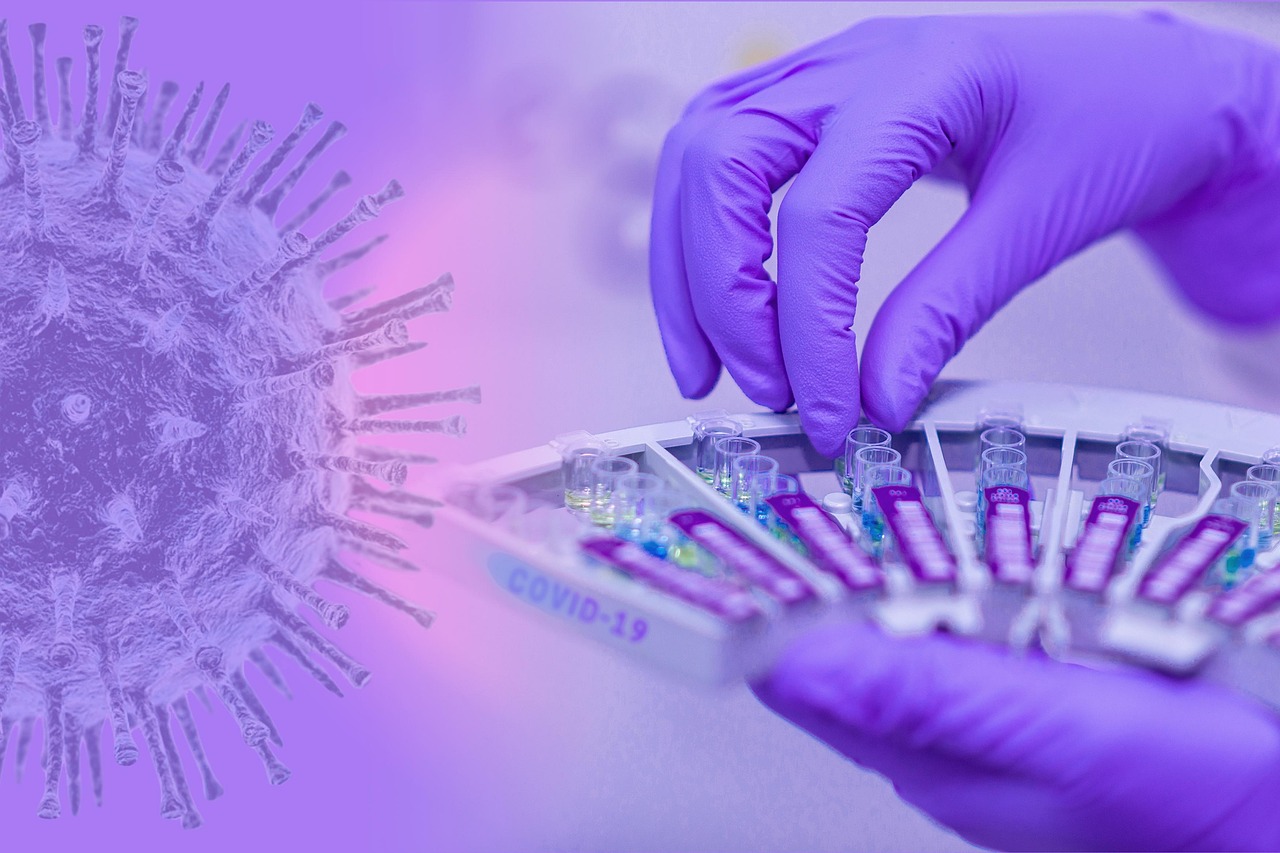Bacteria such as Escherichia coli (E. coli) are developing resistance to antibiotics at an alarming rate. Studies are now pointing to another, often overlooked aspect: mobile phone and Wi-Fi radiation. It has been proven that this radiation can make bacteria more resistant to antibiotics.
Article by Olle Johansson, Ph.D., Associate Professor and former Head of the Section of Experimental Dermatology, Department of Neuroscience, Karolinska Institute, Stockholm, Sweden
Remember the song “Stop! In the Name of Love,” a 1965 hit recorded for the Motown label by the trio Florence Ballard, Mary Wilson & Diana Ross, also known as The Supremes, and written and produced by Motown’s main production team Eddie Holland, Lamont Dozier and Brian Holland.
Dozier said he came up with the idea after being cheated on by his girlfriend. In the heat of the argument, he said, “Baby, please stop. In the name of love – before you break my heart.” (Recall that when the Supremes choreographed this song, they put one hand on their hip and extended the other in a “stop” gesture.) Almost 60 years later, I firmly believe we need to say “Stop! in the name of life.” Why is that? Let me explain!
Emergence of new, antibiotic-resistant, high-risk bacterial clones
Recently, in November 2024, I read that a multi-drug-resistant strain of the bacterium Escherichia coli (E. coli) has gained a foothold in Europe. According to a new study, the emergence of new, more resistant forms of a high-risk clone has increased sharply in recent years, including in my home country of Sweden. Traditionally, E. coli bacteria are spread through water, food and contact with infected people, the latter mainly in hospitals where many antibiotics are used.
By mapping the genetic mass of E. coli bacteria, the European Centre for Disease Prevention and Control (ECDC), in collaboration with, among others, the European Centre for Disease Prevention and Control (ECDC), was able to… from the Swedish Public Health Agency show how the resistant bacteria carrying ESBL-CARBA (Extended Spectrum BetaLactamase withCarbapenemase Activity, a substance found in some bacteria that makes them resistant to certain antibiotics) have spread within and between European countries. The study was recently published in the journal Eurosurveillance (Kohlenberg et al. 2024).
“The study is further evidence of the serious increase in multi-resistant bacteria, which may limit the options for treating serious bacterial infections in the future. Urgent action is needed to counteract the spread of antibiotic-resistant bacteria in Sweden and worldwide,” says Vilhelm Müller, researcher at the Swedish Public Health Agency.
Infections that are difficult to treat today will be very difficult or even impossible to treat in the near future… and that also applies to completely normal, everyday infections!
E. coli bacteria are normally found in our gut flora, but this particular clone is a common cause of, among other things, infections with e.g. for urinary tract infections and blood poisoning (sepsis). The bacteria now being studied are resistant to several common treatment options, including broad-spectrum antibiotics such as carbapenems (carbapenems are antibiotics that are effective against many different types of bacteria and are reserved for treating infections in seriously ill patients and infections caused by bacteria that are resistant to first-line therapy).
The result is that there are few treatment options for patients with these infections. If this antibiotic resistance is not tackled, there is a risk that even simple, everyday infections, such as a splinter in your thumb, will become untreatable and you risk dying. To say that this new situation is serious and dramatic is probably the biggest “understatement” of this century.
Resistant bacteria are a global health threat
The World Health Organization (WHO) classifies carbapenem-resistant bacteria as a global health threat and gives research and development of new treatments a top priority. The ECDC study underlines the importance of further developing and improving the conditions for containing the spread of multi-drug resistant bacteria. Mapping the emergence and spread of multi-drug resistant bacteria across national borders is now of paramount importance, as are much more restrictive open border policies around the world and restrictions on international work and holiday travel.
(It should be noted that the recent COVID pandemic has by no means reached the same classification as a global health threat as antibiotic resistance. The latter has even been described by the WHO as the worst threat to humanity, and antibiotic resistance is referred to as a “silent tsunami for modern medicine”).
3A high-risk clone is a resistant bacterium of great clinical importance that is able to spread with high efficiency in inpatient care, cause severe infection and cause long-term transmission to humans. High-risk clones are an important explanation for the spread of resistance in society.
The Swedish Public Health Agency closely follows the development of case numbers and characterizes all findings with the aim of detecting and preventing the nationwide spread of infections and changes in resistance mechanisms and patterns. The same protective measures are now being implemented in other countries.
Previous observations of antibiotic resistance worldwide
On Monday, May 22, 2017, the newspaper Metro Stockholm reported that the health ministers of the so-called G20 countries, including Australia, France, India, Italy, Japan, Canada, China, Russia, Saudi Arabia, the UK, South Africa, Turkey, Germany and the US, have decided to work together to counteract the ever-increasing and alarming global resistance of bacteria to antibiotics. In the EU alone, there are more than 35,000 deaths annually from antibiotic-resistant bacteria, and by 2050, more than 10,000,000 people worldwide are expected to die prematurely each year as a result of antibiotic resistance.
The measures presented included national action plans that are due to come into force at the end of 2018. In addition, the G20 countries are aiming to make antibiotics available only through formal medical prescriptions and are working to ensure that these drugs are available at lower and more affordable prices in poor countries.
All this sounds very serious and scary, but it is in the hands of highly competent authorities, civil servants, politicians and health officials, doctors and nurses. But why then do they not pay attention to the following points?
Antibiotic resistance, cell phone and WiFi radiation and bacterial communication with microwaves
Surprisingly, however, nothing is reported about the recent results of several international research groups such as that of Taheri et al. (2017; https://www.ncbi.nlm.nih.gov/pubmed/28203122), which have shown that exposure to 900 MHz GSM cell phone radiation and 2.4 GHz radio frequency radiation emitted by common WiFi routers renders Listeria monocytogenes and Escherichia coli bacteria resistant to various antibiotics. These findings obviously have immediate implications for the management of serious infectious diseases (see above) and may potentially lead to a future collapse of the world’s human population.
Another very important study is the study funded by the US DARPA (Rao et al. 2022) which found that biofilms of bacteria, Staphylococcus aureus, communicate using frequencies that are in the range used by Wi-Fi and 5G C-band. The experiment found that no significant radiation in the 3-4 GHz range was emitted by the biofilms of Staphylococcus aureus.
The radiation from three identical biofilm samples was monitored and recorded for 70 days. Two different frequency bands, namely the 3.18 GHz and 3.45 GHz bands, were identified as potential “communication bands”. In addition, long- and short-term cycles of the total radiation intensity within the band were observed over the course of the experiment.
So this latest study suggests that bacterial cells in biofilms can use electromagnetic signals to communicate, similar in nature to our own cell phone and WiFi signals!Biofilms are one of the most common forms of biological systems on Earth and are often associated with infectious disease. They are also responsible for contamination of medical devices and implants, deterioration of water quality and microbial-induced corrosion.
This work confirms the presence of electromagnetic radiation in bacterial communities, which is an important prerequisite for demonstrating electromagnetic signaling between bacterial cells and could lead to a breakthrough in demystifying cell-to-cell communication and advancing important technologies in biology and communication systems. More importantly, however, this is a clear and urgent warning to humanity to stop playing with biology here on Earth – we may very well regret it.
My personal comment on this is: just imagine what our human-generated radio frequency signals used by mobile phones, wireless smart meters, WiFi systems, wireless baby alarms, DECT phones, the Internet of Things (IoT), the Internet of Bodies (IoB) and many other devices/installations/systems operating with colossal power compared to the natural ones could do with these complicated communication mechanisms!
The above could also – if replicated by independent scientists in further controlled studies – explain the observed emergence of antibiotics
Soil bacteria are also affected by radiation from mobile phone towers
It is also worth noting that Sharma Antim Bala and coworkers (2018) demonstrated the impact of radiation emitted from mobile phone base stations on soil microbial diversity and antibiotic resistance patterns. The soil samples were collected near four different base stations in Dausa town, India, while the control samples were collected far away from all base stations.
The microorganisms were isolated and identified using biochemical reactions and antibiotic resistance was detected. Stenotrophomonas maltophilia, Chryseobacterium gleum and Kocuria rosea were isolated and identified in soil samples collected near radiation exposed zones.
Statistically significantly higher antibiotic resistance was found in soil microbes near base stations compared to control using nalidixic acid and cefixime as antimicrobials (p<0.05). The authors noted that “our results suggest that radiation from cell towers can significantly alter the vital systems of microbes and make them multi-resistant, which is currently the greatest threat to public health.”
Given the enormous and highly frightening trend toward more and more antibiotic-resistant microorganisms around the world, I believe that this adaptive phenomenon and its potential threat to human health should definitely be further and rapidly investigated in controlled replication experiments, rather than just spending money and time on national action plans, commercially driving down prices, and
Is The War of the Worlds becoming a reality?
Speaking of Mars, in H.G. Wells’ famous novel The War of the Worlds, the invading Martians were ultimately only successfully fought off by the bacteria, which eventually killed them. Towards the end of the book, the narrator is surprised to discover that all the Martians were killed by an onslaught of terrestrial pathogens to which they had no immunity: “They were slain, after all human means had failed, by the humblest things that God in his wisdom had brought to earth.”
In “The War of the Worlds,” Wells explores the extremes of what is possible within the framework of evolution and natural selection. Are we now moving toward the same extreme, or…? Are we now witnessing a sequel in which the bacteria again respond to a hostile “invasion,” this time with artificial, man-made electromagnetic fields and signals, but now instead wipe us out – humanity – through their ability to adapt quickly and produce new strains of antibiotic-resistant superbugs? And the only ones actually responsible for our extinction are us and our love of “progress.” Do we suddenly have a red button for the end of the world within our reach?! And are you willing to take a chance?
The Electrohypersensitivity Dysfunction, Food, Bacteria and Artificial Radiation
Finally, people with severe electrohypersensitivity have found a direct correlation between the severity of their
functional impairment and the intake of sugar (not white sugar, but sugary foods) and, as a result, increased sensitivity to electromagnetic fields. Such a direct correlation with diet/internal poor gut load on just one day of dieting can lead to a massively overwhelming and irritating increase in sensitivity to electromagnetic fields the next day.
So can influencing gut bacteria (E. coli; Candida albicans?) through diet possibly trigger attacks of electrohypersensitivity?
Is this also a symptom of bacteria with impaired communication due to the effects of artificial electromagnetic fields and signals from our “intelligent” world, the latter of which is not all that intelligent? Maybe it’s time to demystify our lives and our environment and instead listen carefully to our bacteria? Maybe they’re trying to tell us something?
Conclusions
Given all the new data from various investigations published in parallel in several publications on some days, maybe I wasn’t so wrong when I used my common sense and called for safety measures back in the early 1980s; maybe it was 100% morally-ethically right to raise the alarm and warn everyone that we are under attack by an invisible invader that is using the colossal exposure levels – of modern telecommunication technologies – to invade our cells and tissues and alter their sensitivity to pharmaceutical treatment?
From a public health perspective, the evidence in the form of thousands of peer-reviewed scientific publications covering various health and biological effects is overwhelming – now society must act! Pushing academic scientists, who have great know-how and a strong scientific curiosity, out of their jobs because of “lack of money” will not sound good in the future. Not at all.
As a spiritual firefighter (aka scientist) I would personally hate to arrive at the gates of heaven and hear Saint Peter say:
“Why didn’t you react and act, Olle, you understood, you knew, you saw; you could and should have done much more!”.
No, as a spiritual firefighter I prefer to do my best and maybe be wrong – false alarms don’t make ordinary firefighters or citizens cry, and so it shouldn’t make anyone sad or angry if my concerns are wrong. We need to get out of today’s society that constantly shoots the piano player instead of listening.
The above statement by the ECDC is potentially very important! It is part of a dangerous development that I, Olle Johansson, have been trying to point out and warn about for decades.
Science has already proven that bacteria exposed to mobile phones and WiFi radiation are resistant to antibiotics. The implications of this finding are terrifying and may explain the current massive and highly frightening development of more and more antibiotic-resistant microorganisms around the world.
So I repeat: Stop all forms of wireless energy delivery to bacteria. This potential madness must be stopped until we know if it is safe for everyone!
Stop! In the name of life!
By Dr. Olle Johansson, Associate Professor and former Head of the Section of Experimental Dermatology, Department of Neuroscience, Karolinska Institute, Stockholm, Sweden, and former Visiting and Associate Professor at the Royal Institute of Technology, also Stockholm, Sweden. He is a world-leading authority on artificial electromagnetic radiation and its health and biological effects. Among many other achievements, he coined the term “screen dermatitis,” which was later developed into the functional impairment electrohypersensitivity, the recognition of which is largely due to his work. Read his full biography here: https://vetapedia.se/olle-johansson-associate-professor-ki/
References
- Bala SA, Os L, Lokendra S, Abhishek S, ”Effect of mobile tower radiation on microbial diversity in soil and antibiotic resistance,” In: 2018 International Conference on Power Energy, Environment and Intelligent Control (PEEIC), Greater Noida, India, 2018, pp. 311-314
- Johansson O, ”Bacteria, mobile phones & WiFi – a deadly combination?”, Nya Dagbladet 31/5, 2017 9
- Kohlenberg A, Svartström O, Apfalter P, Hartl R, Bogaerts P, Huang T-D, Chudejova K, Malisova L, Eisfeld J, Sandfort M, Hammerum AM, Roer L, Räisänen K, Dortet L, Bonnin RA, Tóth Á, Tóth K, Clarke C, Cormican M, Griškevičius A, Khonyongwa K, Meo M, Niedre-Otomere B, Vangravs R, Hendrickx APA, Notermans DW, Samuelsen Ø, Caniça M, Manageiro V, Müller V, Mäkitalo B, Kramar U, Pirs M, Palm D, Monnet DL, Alm E, Linkevicius M, ”Emergence of Escherichia coli ST131 carrying carbapenemase genes, European Union/European Economic Area, August 2012 to May 2024”, Euro Surveill. 2024; 29: pii=2400727 ( link 1 or link 2)
- Rao M, Sarabandi K, Soukar J, Kotov NA, Van Epps JS, ”Experimental evidence of radio frequency radiation from Staphylococcus aureus biofilms”, IEEE Journal of Electromagnetics, RF and Microwaves in Medicine and Biology, 2022; 6: 420-428
- Taheri M, Mortazavi SM, Moradi M, Mansouri S, Hatam GR, Nouri F, ”Evaluation of the effect of radiofrequency radiation emitted from Wi-Fi router and mobile phone simulator on the antibacterial susceptibility of pathogenic bacteria Listeria monocytogenes and Escherichia coli, Dose Response, 2017; 23: 15-22
Article by Olle Johansson from NewsVoice 9/1, 2025, a German translation is available here as PDF






